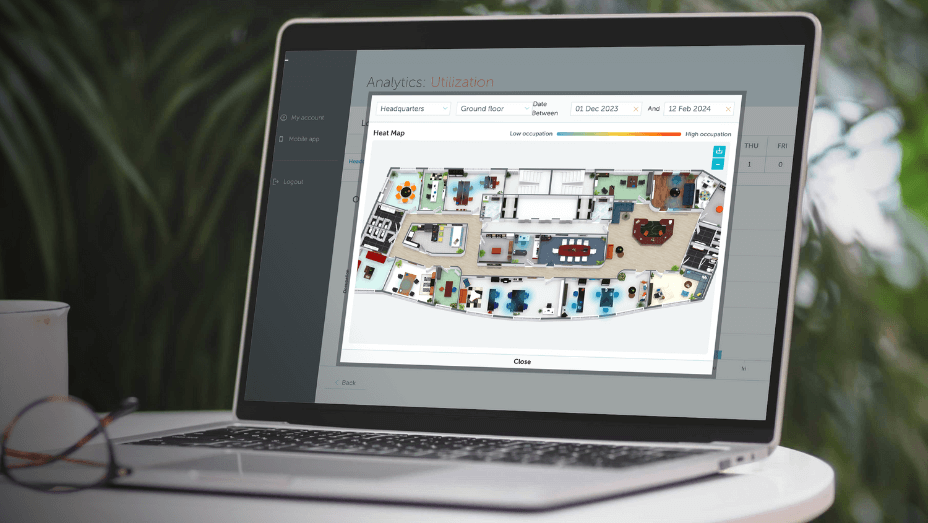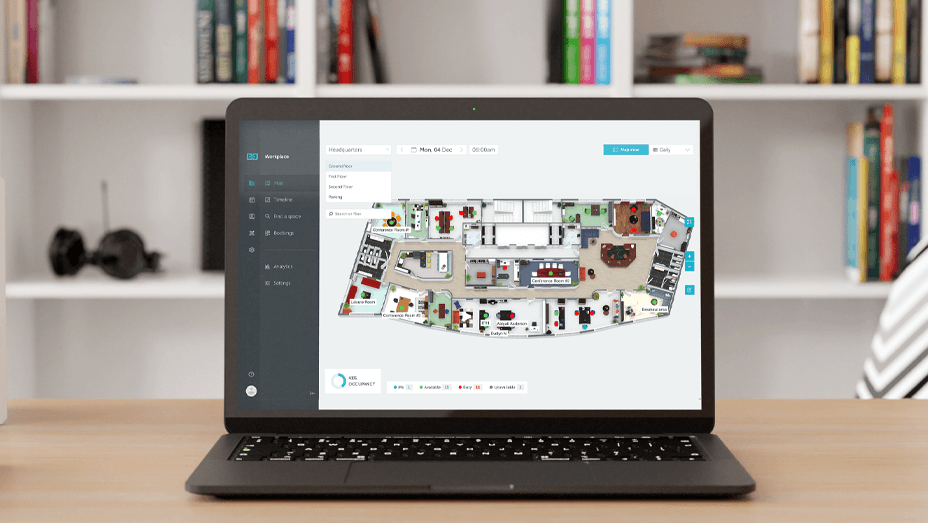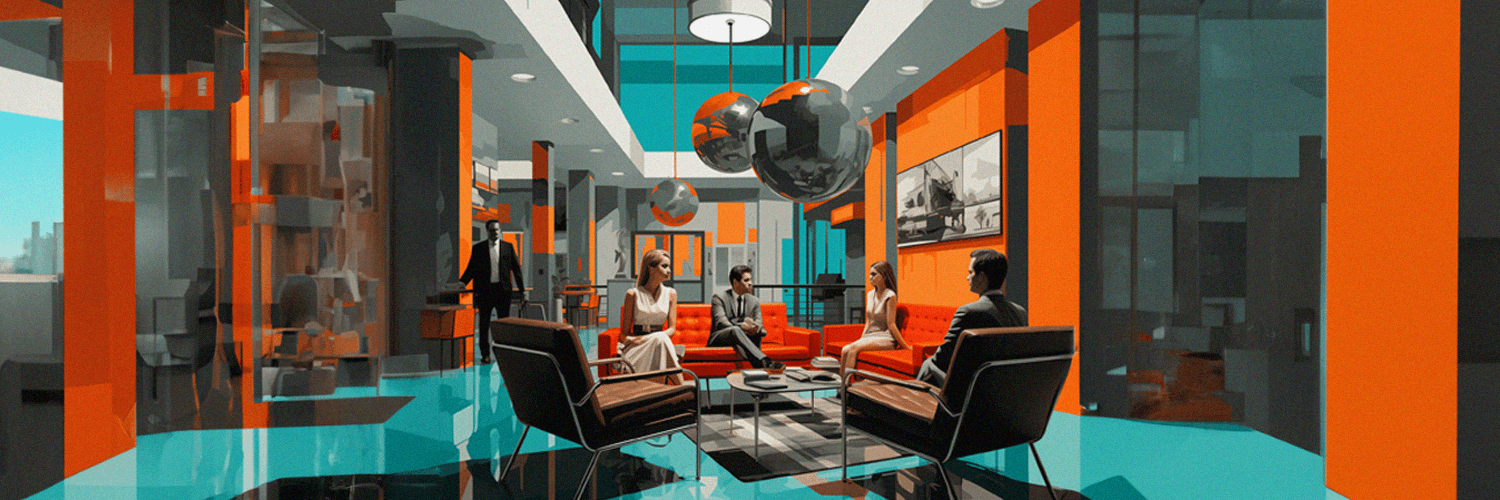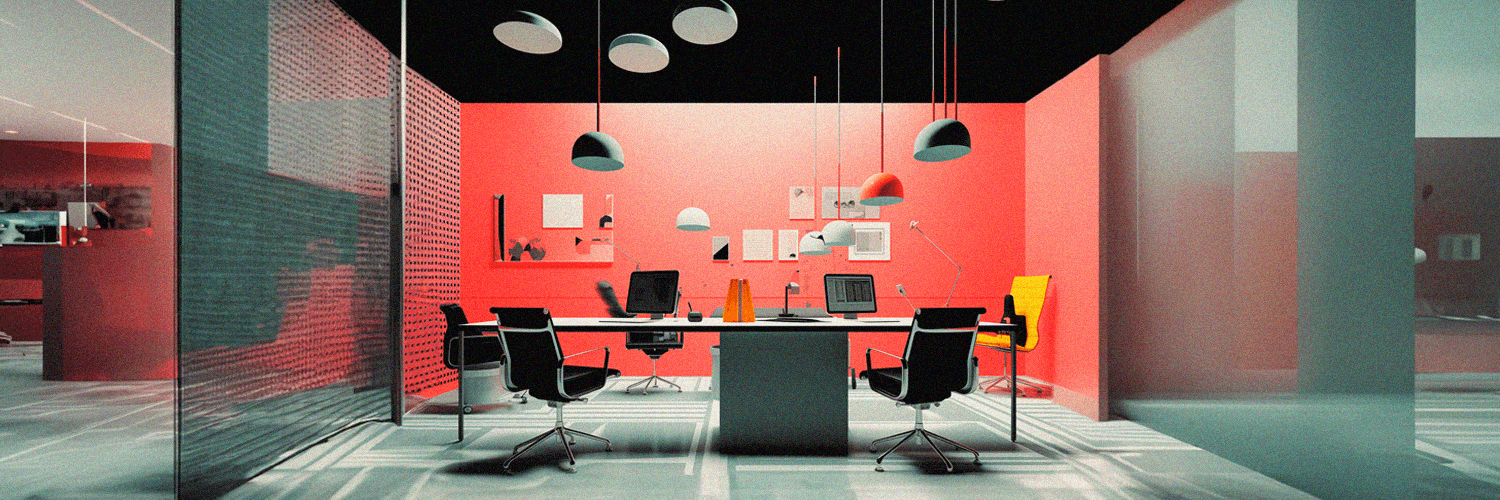Remember the iconic world of 'Mad Men", where crisp suits, typewriters and corner offices were the epitome of a successful career?
Well, just like the show itself, those traditional office settings are becoming a thing of the past!
The landscape of the workplace has fundamentally changed over the years, driven by technology, changing work dynamics and a new perspective on what it means to be professionally successful.
Today, companies are embracing flexible working and redesigning their workplaces like never before. And at the forefront of this workplace revolution is technology.
Workplace technology is enabling us to optimize our workplace strategies, create employee-centric work environments and ensure the health and safety of employees – let’s take a closer look at how!
TL;DR
- There is a shift from traditional office environments to more flexible and employee-centric environments, and workspace tech is helping in at least eight key areas, including: flexible working, optimizing workspace utilization, managing workplace services and amenities, downsizing/consolidating office space, ensuring employee health and safety, and moving towards a net-zero workplace.
- Comprehensive workplace experience platforms are a digital foundation for modern workplace strategies, benefiting IT, HR and Facilities & Operations departments.
- The role of technology is illustrated with examples such as Saipem and ASEE Group's collaboration with Yarooms.
Implementing Flexible Work
A working environment where employees can decide for themselves when and where they work may sound truly futuristic – except that it's already happening! If you haven’t jumped on the flexible work trend yet, you might be wondering where to start…
Hybrid work planning calendars are a key element in the implementation of flexible working, as they allow employees to plan their days according to their preferences and needs. Whether employees are working from home or coming into the office, these calendars help to ensure a smooth workflow on any given day.
But flexible working goes beyond mere scheduling.
This includes booking meeting rooms, parking spaces and resources so there is no more confusion or conflict, as well as workplace analytics that help managers get an overview of who is working when and where – so they can make data-driven decisions about resource allocation and team dynamics.
Saipem, a leading technology and engineering platform, has successfully introduced smart hybrid working in its organization in collaboration with Yarooms. Thanks to Yarooms' innovative solutions, Saipem was able to seamlessly transition to a hybrid working model following the relocation of its Milan office.
Yarooms room booking and hybrid work planning software played a crucial role in the efficient planning of hybrid working arrangements. Other benefits included optimizing the new office, managing seating arrangements and gaining an overview of the complex organization.
The success of this collaboration underlines the important role that technology plays in promoting flexibility and a positive working environment. Watch the full story:
Saipem customer case. Discover the whole story.
Managing Workplace Services and Amenities
A key benefit of workspace technology is the seamless management of workplace services and amenities. By integrating the booking of services and amenities into the room booking process, organizations can streamline their operations and provide a better experience for their employees.
Imagine you need to book a meeting room for an important client presentation. Not only do you reserve the room, but you also have the option to book the extra chairs you need for your colleagues attending the meeting with you. This ensures that all the necessary resources are available when they are needed.
If there is ever a problem with one of these resources, such as a broken headset or a malfunctioning device, you have the opportunity to give feedback to the office manager. He or she will immediately take care of solving the problem so that your working day is not interrupted.
This integrated approach streamlines processes and allows companies to provide exceptional service while responding to the needs of employees.
Optimizing Workspace Utilization
Optimizing workspace utilization is the key to creating an efficient and productive workplace. One way to achieve this is to book workstations effectively.
Gone are the days of having to scramble to find a meeting room or a desk – with modern technology, you can easily book all types of spaces, from rooms to desks. But that's not all!
Office heatmaps provide valuable insights into room utilization. These visual representations allow you to see which areas are in high demand and which may be underutilized. Armed with this knowledge, you can make informed decisions about the room layout and optimize your office layout accordingly.
Utilization reports go one step further and provide detailed data on how spaces are being used over time. With these reports, you can identify trends, peak times and areas that may need to be adjusted, and ensure that every inch is used wisely.

Downsizing/Consolidating Office Spaces
When introducing smart office strategies, companies are often faced with the challenge of optimizing downsized or consolidated office spaces in order to increase resource efficiency. Utilization analytics and hybrid work planning tools play a central role in this.
Utilization analytics provide valuable insights into how your office space is being used. By tracking factors such as occupancy rates, peak times and usage patterns, you can identify areas that are underutilized and make informed decisions about downsizing or consolidation.
Hybrid work planning tools go one step further and help you plan flexible working arrangements based on who will be in the office on which days to ensure your workplace is optimized for maximum efficiency.
Yarooms illustrates its effectiveness with the case study of ASEE Group, a large IT company that successfully overcame the challenges of a pandemic-related workplace change by downsizing its headquarters by one floor and adopting a hybrid working model.
With Yarooms Workplace Experience Platform, ASEE efficiently managed daily room bookings, and with Yarooms' workplace analytics, employee attendance monitoring was simplified and the need for manual methods eliminated. As a result, ASEE achieved a smooth transition to the hybrid working model, increased team satisfaction and significant annual savings.
Moving into a New Office Space
Moving to a new office can be an exciting but overwhelming experience. One tool that can simplify this process is interactive office maps, which provide a visual representation of the entire workplace and allow employees to easily locate different departments, meeting rooms or facilities.
Another useful feature is office wayfinding, which helps employees find their desired destinations in the office. Whether it's finding a specific desk or the nearest restroom, wayfinding makes it easy for employees to navigate their new work environment.
Utilization analytics are another valuable tool when moving to a new office. They provide information on how the space is being used in the workplace.
By analyzing data on room occupancy and usage patterns, companies can decide how to allocate resources and optimize space utilization – ensuring that everyone has access to a working environment that is tailored to their needs and promotes collaboration and productivity.
Ensuring Employee Health & Safety
Ensuring the health and safety of employees is a top priority in every workplace. With the help of Workspace technology, companies can implement various measures to create a safe working environment.
One aspect is dealing with capacity restrictions. By using workspace tech, companies can easily monitor and control the number of people in different areas of the office. This helps to adhere to social distancing guidelines and prevent overcrowding, reducing the risk of spreading illness.
In the event of an emergency or accident, it's important that trained staff are available to provide immediate assistance. Workplace technology allows companies to track employees with appropriate certifications or training so that they can be found quickly in an emergency.
Workspace technology solutions also simplify visitor management. Registration processes ensure that all visitors are recorded and their details stored for security purposes. In addition, hosts are notified upon arrival to ensure that no visitor is left unattended, enhancing both security and hospitality.
Creating an Employee-Centric Workplace
Creating an employee-centric workplace is critical to fostering a positive and productive work environment while meeting individual needs.
One way to achieve this is through the seamless integration and usability of technology tools in the workplace. By integrating different software systems, employees can access everything they need from one central platform and no longer have to laboriously switch between different applications.
Another important aspect of an employee-centric workplace is the ability for employees to plan their own day. With the right software, they can manage their time effectively – scheduling meetings, booking resources, accessing important information – and having an overall sense of ownership over their work.
In addition, accessibility is key to an inclusive workplace. With features such as screen readers and adjustable font sizes, employees with disabilities can participate in all aspects of work without barriers.
Gathering employee feedback is crucial to understanding employee needs and improving the workplace overall. Through regular feedback, employers can proactively address issues and make necessary improvements.
Interactive floor plans provide employees with a visual representation of the office layout, making it easier for them to find their way around and locate colleagues or meeting rooms.
In addition, visibility of colleagues' flexible schedules encourages collaboration by allowing individuals to find suitable times for meetings or discussions.

Moving Towards a Net Zero Workplace
Creating an environmentally sustainable workplace has become increasingly important in today's world. Many companies are now taking steps to reduce their carbon footprint.
Tracking and monitoring their carbon emissions, companies can gain valuable insight into areas that need to be improved.
Another aspect of creating a net zero workplace is the introduction of commuting tracking so that employees can track and analyze their driving habits, which helps them make more sustainable choices, such as carpooling or using public transportation.
The introduction of flexible working models can also make a significant contribution to reducing greenhouse gas emissions. By giving employees the option to work part-time or remotely on certain days, companies can minimize the need for daily travel and make progress towards a net-zero workplace.
Streamlining Visitor Management
Visitor management is an important aspect of any workplace strategy. With the right technology, you can streamline the entire process and ensure a smooth flow for visitors and reception.
One way to optimize visitor management is through pre-registration and registration systems. By giving visitors the opportunity to register in advance, you can capture important information such as their name, the purpose of their visit and estimated time of arrival.
In addition, the reception is informed directly about the arrival so that no visitor is left unattended. This avoids the confusion and delays that can occur when visitors have to wait at reception.
Visitor management not only improves efficiency, but also provides valuable insights into visitor patterns and behavior. By analyzing data such as peak visiting times or frequently visited areas in the workplace, companies can optimize their resources accordingly and improve the overall visitor experience.
By implementing these optimized visitor management processes, companies can create a more professional and efficient environment while ensuring a positive experience for all.
Workplace Experience Platforms: The Digital Foundation for Workplace Strategy
Today, it's no longer enough to rely on a single software system – that too is a relic of the past! The challenge is to navigate the ever-growing landscape of new technologies and figure out which tools integrate seamlessly into your organization's technical system.
All-encompassing workplace experience platforms mark a fundamental shift in the way organizations approach employee wellbeing and operational efficiency.
As the business landscape evolves, the need to connect disparate tools and data in real time is becoming a critical factor in developing comprehensive, data-driven strategies.
Workplace experience software is a beacon in this technological evolution. It represents a new wave of technologies that not only improve the quality of life for employees but also increase the operational efficiency of companies.
- For IT departments, it offers an easy-to-use, integration-friendly solution that prioritizes user security and minimizes reliance on technical support. Yarooms is an example of a lean approach to navigating the changing landscape of workplace technology. It integrates seamlessly with existing systems and offers features such as an intuitive meeting room booking interface and comprehensive analytics tools.
- HR departments also benefit considerably from this innovation. The software allows employees to easily manage their workplace preferences, which contributes to greater satisfaction and well-being, which ultimately translates into higher productivity.
- Facilities & Operations also find a valuable ally in workplace experience platforms. By leveraging the analytics provided by the software, they can optimize costs by carefully tracking space utilization and facilitating the implementation of sustainable measures that effectively reduce overhead costs.
At a time when the workplace is as dynamic as the technology that powers it, the introduction of comprehensive solutions such as workplace experience platforms is becoming a strategic imperative. It's not just about managing a workplace – it's about creating an experience that promotes efficiency, satisfaction and sustainability in equal measure.



.png)









